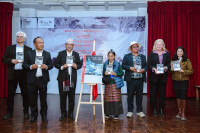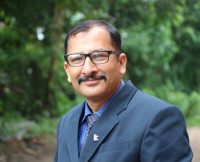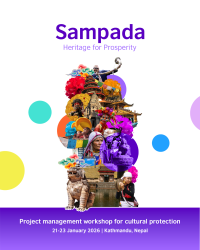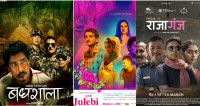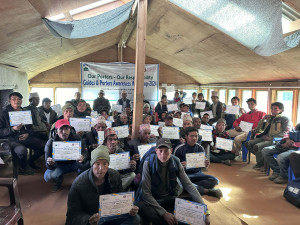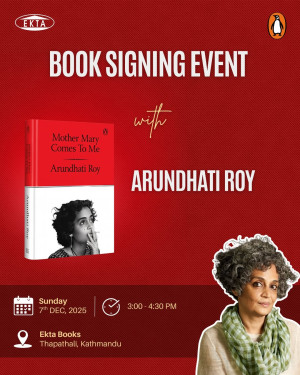Culture & Lifestyle
New Nephop collaboration—Kalamkranti Cypher—brings youthful angst together
Music producer Rohit Shakya and rap artist Uniq Poet, with Halla!, bring together the voices of 33 artists in a rare hip hop collaboration, calling attention to the strong ethos of the youth in the country.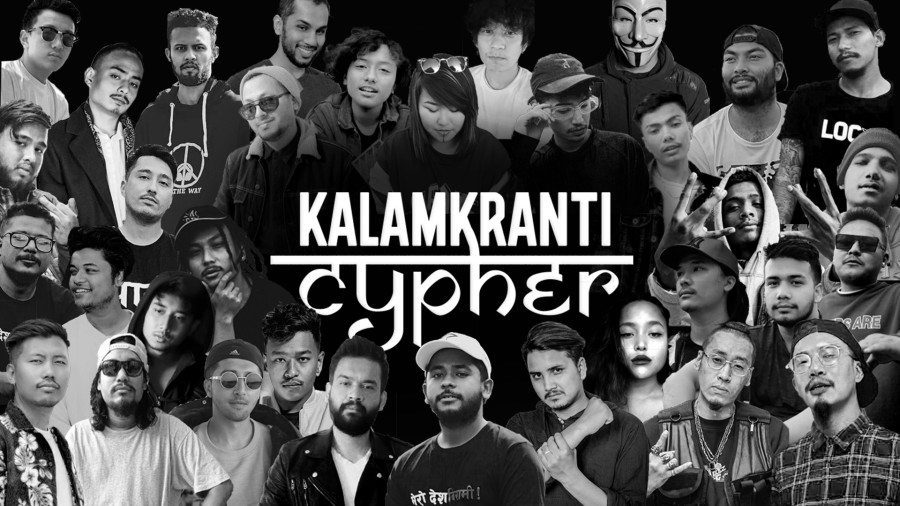
Srizu Bajracharya
In early July, Dayjen J Shrestha texted Utsaha Joshi, or Uniq Poet as he's better known as, a simple message that read, ‘Hey, maybe it’s time to get back to your idea of a rap cypher’.
With the pandemic upending the musical scene, many musicians were taking their music online to refresh people’s mood in an overwhelming lockdown. There was Phiroj Shyangden strumming his guitar to his followers, and there was Deepak Bajracharya grooving people with his song 'Man Magan'.
“It was a time when everyone was venturing online and collaborating with one another, and so I texted Uniq who had pitched this idea of collaborating with rap artists for a cypher a long time back. I told him now [the country’s first lockdown] was a good time to get back to that idea,” said Shrestha, rapper and co-founder of Halla!, an independent music e-magazine.
“A cypher is basically a jam session where rappers and beatboxers gather around in a circle to deliver their raps. It’s an energetic scene and while I was abroad I missed that creative environment, and I had hoped to do one big collaboration with rap artists once I was here,” said Joshi.
The music project, however, isn’t a cypher to be exact, but, in its own way, it is engaging because it immerses the listeners in the rapper’s narratives.
“So, when Dayjen reminded me of that idea I jumped on board with it,” said Joshi.
And now, their hip hop collaboration, Kalamkranti Cypher, has become one of the rarest experimental rhythmic singles in Nepal's limited rap history. The track’s old school beat isn’t addictive but it's funky texture allures a feeling of suspense and goofiness and keeps one tuned, while the continuous layered boost beat pumps up the passion with robust rap deliveries.
“I had sent about three to four beat options. Dayjen and Uniq picked this beat as it was simple and had a flow that could carry the styles of the different rappers,” said Rohit Shakya, the music producer.
Kalamkranti feels significant not because of the impressive lineup of rappers, but because the rap features verses from artists that resonate with the mood of the current time and speaks for various issues—of corruption and nationalism to the divided sense of logic among the people. It also heeds for individual responsibility and addresses other raging issues, like increasing incidents of rape, domestic violence and caste-based discrimination. And in the rawest semantic evokes our own frustration and pain. It imbibes the feeling of being locked behind four walls, the rage of being cheated and repressed and the exasperation and desolation of separation.
One can feel the rage of the artists in the opening line itself, written by Uniq Poet, which says, ‘Nepali ragat sab bhanda tato.’ He sets the premise of the uneasiness everyone is feeling right at the start and lets the rap artists shoulder a movement.
The song’s video by Prajwol Thapa Magar, aka Jholey, also calls people’s attention to the ethos of the rappers and their words. He features rappers rapping from inside frames on newspapers and fixates viewers to see them as part of the story they are representing.
“I would say it’s a historical collaboration, as we have never seen such unison of rappers before: it brings together 33 artists and that is a feat to celebrate,” said Shrestha.
Following their decision to collaborate in July, things quickly took momentum for them and in the next three months, they plunged right into the process of bringing the project together.
“Uniq, I and Halla! reached out to rappers in our circle and the response was quite overwhelming. Everyone was eager to put the project together,” said Shakya. And while Shakya worked on the beat to help the rappers with their flow, Joshi made two sample videos to guide participants with their deliveries. The participants were also briefed to write a verse for any of the nine themes provided—lockdown, border, government transparency and honesty, individual responsibility, entrepreneurship, motivation, self-sustainability, environment and post-covid life.
The challenge for the collaboration was merging together the rap deliveries sent in by various rappers who had their own different styles. “I had to make sure there was consistency throughout the song. Rap is about clarity and so I also had to work on the quality of the sound as they were all mobile video recordings,” said Shakya, who worked on several drafts trying different sequences of the raps. “But on the whole, this was a very arresting project, all of us were quite driven from the get-go,” said Shakya.
And although the music video has only received over a hundred thousand views on YouTube, the creators are not perturbed by the viewer’s response as for them this collaboration has been significant in terms of connecting with rappers in the Nepali community and to speak for the issues of the hour. “This wasn’t a project that intended to become popular; it was an initiative to do something together and give a social message,” said Joshi.
Fans on social media have expressed disappointment over the fact that their favourite rappers have very short deliveries in the song and the collaboration doesn’t meet the expectation one would think. But the music video purposely features both recognised and new rap artists in an intermix sequence to hold the attention of the viewers with the flow of the rap. “Collaborations like these come with limitations for we need to space-time for everyone and writing in 4 to 8 bars is not that easy, yes, in reflection, I think it could have been more impactful but I am proud of what we did,” said Joshi.
Despite the tepid response, Kalamkranti is a poignant, and powerful form of artful protest where artists don’t just point out the faults of the government and society but also question the roles of the listeners. Rapper Amazumi in her rap delivery sharply questions the silence of people on the atrocities happening around them. She strikes with, ‘Are you still watching on the sidelines? So what if they ask you to take the bench, you go ahead and use your game to get gains on the movement; mobilise, organise.’
In the most unassuming way, without any flexing and bragging, Kalamkranti feels more like a passionate discussion where the youth are presenting facts and pouring their frustrations while demanding social change. It is quite evident that this song is not for grooving; it is not a song that you will come back to, but even then, in its own way, the collaboration is unforgettable.
“Music is a strong medium of touching people’s lives and so this collaboration is important in the sense that this will resonate with some people if not all and help create a dialogue or question the wrongs in the society. And for musicians, just contributing to that is significant,” said Shakya. “And I think it is a moving track because it pinpoints the experiences of the youth in this chaotic time and brings together a common frustration.”




 10.12°C Kathmandu
10.12°C Kathmandu

